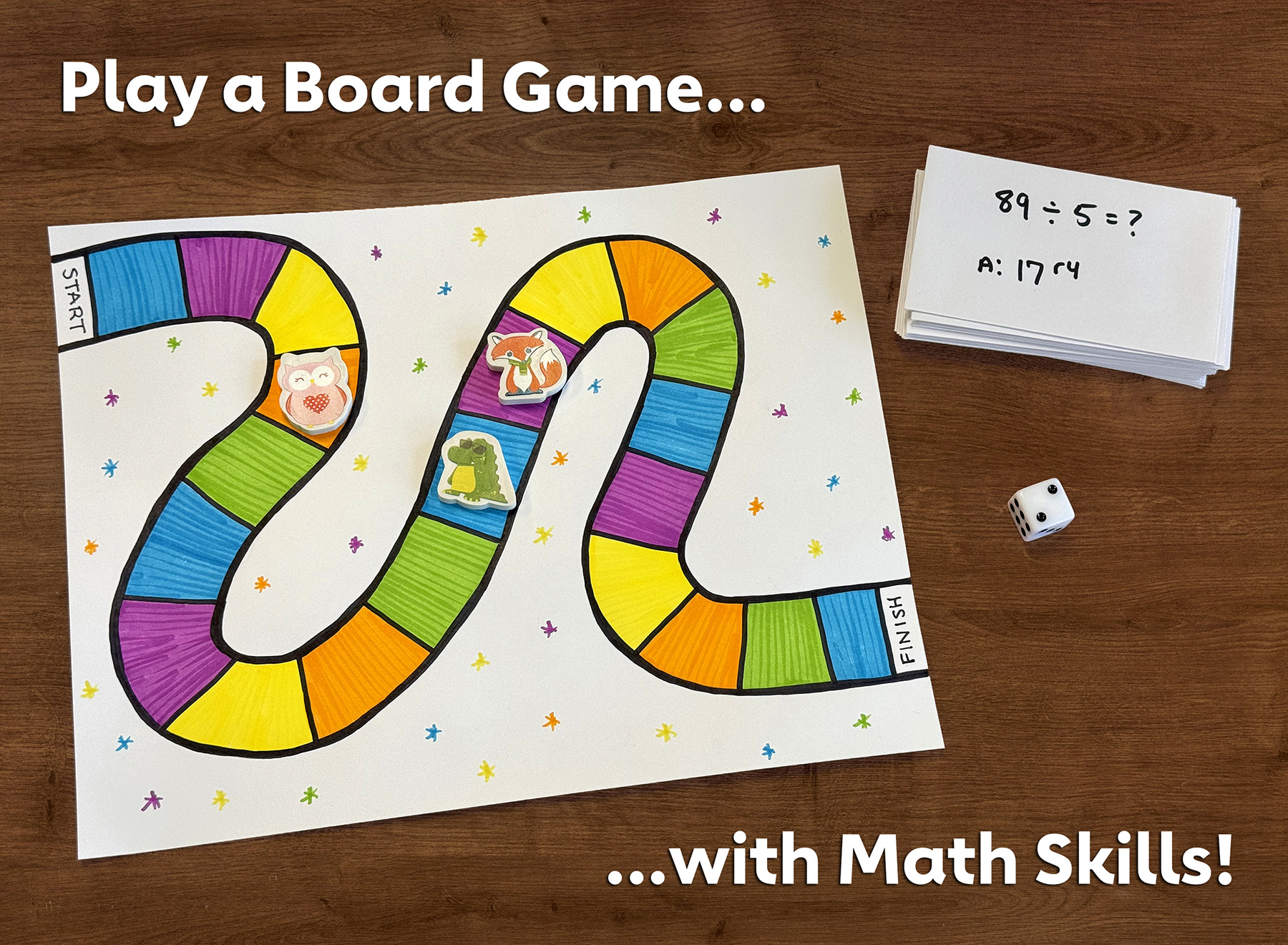
Tired of simple flash card drills? Looking to add an element of fun to practicing essential math skills? From number recognition to division to fractions, you can turn any skills review into a literal game with just a little bit of prep. Trust us: it’s worthwhile!
You’ll need a few things to get started.
Materials:
index cards
paper
pens, pencils, or markers (colored optional)
game pieces (colored buttons, small figurines, etc.)
dice or a spinner
game board template (optional)
poster board or cardstock (optional)
glue and scissors (optional)
Step 1: Assemble the Game Board
The first step is the most creative: laying out your game board. Save time by using a template like this one, or let your creativity shine and design your own using paper and the writing implement of your choice. We recommend 30+ spaces on your game track, but you can have fewer or more depending on the number and ages of your players.
For added durability, use poster board or cardstock for the game board. If you’re using a pre-made template, simply glue it on top of the sturdier base. The board itself can be as simple or as intricate as you’d like. Feel free to decorate the surrounding blank space with themes like forest or space imagery.
Definitely consider adding color to the spaces, since this opens the door for using a color-based spinner instead of a die to control movement around the board. If you choose this route, you can make a spinner using two pieces of paper and a brass fastener. (Sturdier cardstock is preferred.) Draw a circle on the bottom piece of paper and divide it into as many sections as there are different colors of tiles. Color in the circle’s sections to match. Then cut out a spinner arm, punch holes in the middle of the circle and the base of the arm, and use the brass fastener to stick them together.
If you’re drawing your own board, make sure “Start” and “Finish” stand out!
Step 2: Write the Questions
Cut index cards in half or into thirds to make more reasonably sized game cards. Then write questions on the back of each, tailored to the skill or skills you want to practice: single- or double-digit addition, division with remainders, multiplying fractions, translating numerals into their word forms—you name it! Kids can use a piece of paper to work out problems, show numerals, etc.
How you handle answers is up to you! If you have a game master or plan on having the other players read the cards to each other, then you can write the answer directly on the card as well. If you plan on each player pulling and reading their own cards, then you should number the cards and compile a corresponding answer key on a separate sheet of paper.
Aim to have at least as many question cards as there are game spaces, preferably more, to prevent the chance of needing to repeat cards later in the game. You can even use generator tools like those offered at Super Teacher Worksheets to help come up with some of the problems.
Step 3: Play the Game
Time to review in style! Have players take turns rolling dice or flicking the color spinner. However, before they move the corresponding number or colors of spaces, they must draw a question card. They can only move forward if they answer it correctly!
First to the end wins!